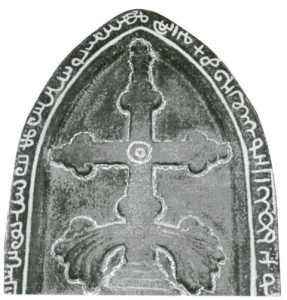CHRISTIANITY IN INDIA
 This is what Apostle Thomas said to Jesus when he recognized the resurrected Jesus and made his confession. This sentence became the title of the Church of the East or in other words Thomas Christianity. The history of the Church of the East goes back to the time of Jesus. We all know that before His Ascension, Jesus commissioned the apostles, “Go into the whole world and preach the gospel to every creature.” (Mark 16, 15) Apostle Thomas went to the Orient to spread the Gospel. According to tradition after being the missionary in Egypt and Ethiopia he went to Mesopotamia (at that time it was the Parthian Kingdom till 221 AD when the Sassanidan Persians conquered them) and in 52 AD he arrived in South-India. In that year he founded seven Christian communities of which we still have the evidences. It is not easy to reconstruct the community life and liturgy of those churches for we lack information.
This is what Apostle Thomas said to Jesus when he recognized the resurrected Jesus and made his confession. This sentence became the title of the Church of the East or in other words Thomas Christianity. The history of the Church of the East goes back to the time of Jesus. We all know that before His Ascension, Jesus commissioned the apostles, “Go into the whole world and preach the gospel to every creature.” (Mark 16, 15) Apostle Thomas went to the Orient to spread the Gospel. According to tradition after being the missionary in Egypt and Ethiopia he went to Mesopotamia (at that time it was the Parthian Kingdom till 221 AD when the Sassanidan Persians conquered them) and in 52 AD he arrived in South-India. In that year he founded seven Christian communities of which we still have the evidences. It is not easy to reconstruct the community life and liturgy of those churches for we lack information.
What we know for sure is, that there was a Gospel by Apostle Thomas which was found at the area of Nag-Hammad Copt Monastery in 1945 by an Egyptian shepherd called Mohammed. In a huge clay jar they found other Gospels too (Gospel of Philip, Gospel of Mary Magdalene, Gospel of Truth etc.) and Early Christian writings. We also know for sure that the Gospel of Thomas was very popular and widely known Gospel at that time, surprisingly it was more popular then the other later canonized Gospels. This one is different in style and structure than the other four. It is easy to tell after reading it that this Gospel reflects the Oriental spirituality and way of thinking. Most likely this Gospel was also popular in South-India. Beside the spirit of the Thomas Gospel the Church of the East was strongly influenced by the Parthian Christian Priesthood. We have information about the strong connection between the Dravidian, Sumerian and Egyptian culture and trade. This vital circulation of culture was the reason that the Parthian priesthood tradition was channeled into the Indian Christianity at the arrival of Apostle Thomas.
In the fourth century Syro-Persian missionaries arrived in South-India which changed the feature of their Christianity into a strong Semitic one. This Judeo-Christian type was essentially different from the Thomas type of Christianity. Till the XVth century, the arrival of the Portuguese, the Church of the East was homogeneous. After some peaceful years, the Portuguese turned against the Indian Christians and started to burn their sacred scriptures, saying that these are all heretic and they should turn to the original true faith which is the Roman Catholicism, and so it happened. A few decades later some native priest rebelled against it and reestablished their own Indian Christian churches. Today approximately there are 35 million Christians living in India.
Why is the history of the Church of the East interesting for us Hungarians? We know from Syrian manuscripts that the Huns (white Huns) received three bishops from the Merv diocese, and Baptisms took place in 571 AD. This information gave me the start to search for the roots of our Hun-Magyar-Avar Christian tradition. We were taught in school that the Huns and Magyars came to the Carpathian Basin as barbaric and pagan people. These evidences prove the contrary. Árpád and his ancestors carried the Oriental way of Christianity from the East, intolerated by the Roman Judeo-Hellenistic type of Christianity. At the turn of the first millennium István had to make the crucial choice between the Roman and the Byzantinic type of Christianity. However the ancient Hungarian Christian religion was channeled to us through folk culture and art.
